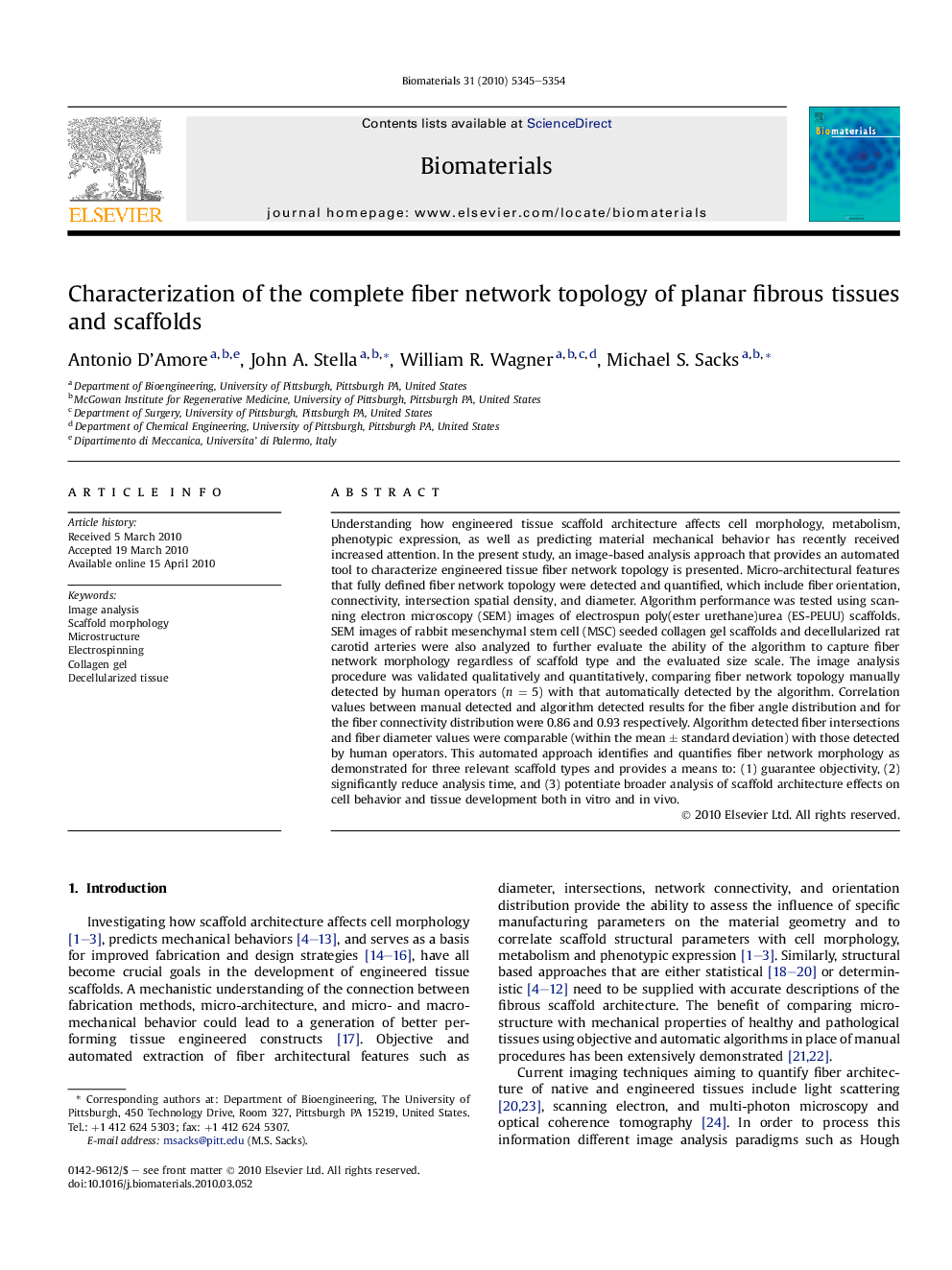| کد مقاله | کد نشریه | سال انتشار | مقاله انگلیسی | نسخه تمام متن |
|---|---|---|---|---|
| 8875 | 609 | 2010 | 10 صفحه PDF | دانلود رایگان |

Understanding how engineered tissue scaffold architecture affects cell morphology, metabolism, phenotypic expression, as well as predicting material mechanical behavior has recently received increased attention. In the present study, an image-based analysis approach that provides an automated tool to characterize engineered tissue fiber network topology is presented. Micro-architectural features that fully defined fiber network topology were detected and quantified, which include fiber orientation, connectivity, intersection spatial density, and diameter. Algorithm performance was tested using scanning electron microscopy (SEM) images of electrospun poly(ester urethane)urea (ES-PEUU) scaffolds. SEM images of rabbit mesenchymal stem cell (MSC) seeded collagen gel scaffolds and decellularized rat carotid arteries were also analyzed to further evaluate the ability of the algorithm to capture fiber network morphology regardless of scaffold type and the evaluated size scale. The image analysis procedure was validated qualitatively and quantitatively, comparing fiber network topology manually detected by human operators (n = 5) with that automatically detected by the algorithm. Correlation values between manual detected and algorithm detected results for the fiber angle distribution and for the fiber connectivity distribution were 0.86 and 0.93 respectively. Algorithm detected fiber intersections and fiber diameter values were comparable (within the mean ± standard deviation) with those detected by human operators. This automated approach identifies and quantifies fiber network morphology as demonstrated for three relevant scaffold types and provides a means to: (1) guarantee objectivity, (2) significantly reduce analysis time, and (3) potentiate broader analysis of scaffold architecture effects on cell behavior and tissue development both in vitro and in vivo.
Journal: Biomaterials - Volume 31, Issue 20, July 2010, Pages 5345–5354